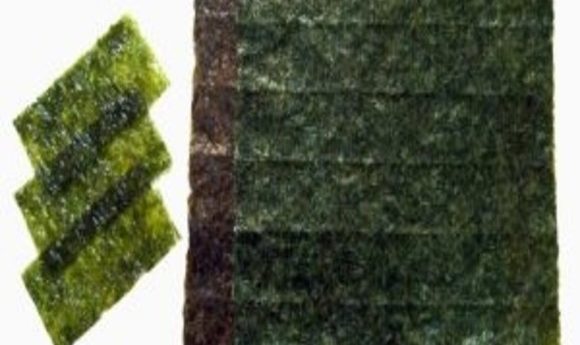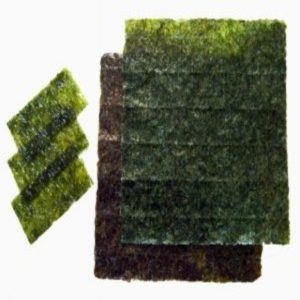Seaweed manipulates microbiome

Feeding mice varying amounts of seaweed has shown that the engrafting of gut bacteria can be manipulated by diet.

Scientists at Stanford University School of Medicine (CA, USA) have manipulated the microbiome of mice by adding varying amounts of seaweed to their diet. The seaweed helps engraft the bacteria and the amount of it regulates the number of bacteria in the gut. The results of this study, published in Nature, further our understanding of the gut microbiome and may help to develop tools to fight disease.
The food we eat is often full of bacteria. When we ingest food, some of the bacteria remain in our system and become part of our microbiota; this is called engrafting. However, most of the time bacteria are simply flushed through the system.
It could be advantageous to engraft beneficial bacteria and grow them to help maintain a healthy gut and fight disease. However, the ecology of the gut is extremely complex and it has been difficult to establish colonies of bacteria until now.
Author Justin Sonnenburg explains:
“We’re all endowed with a microbial community in our guts that assembled in a chaotic manner during our first few years of life. Although we continue to acquire new strains throughout life, this acquisition is a poorly orchestrated and not-well-understood process. This study suggests it could be possible to reshape our microbiome in a deliberate manner to enhance health and fight disease.”
To determine if introducing a new food would help engraft bacteria, the team first needed to find a bacterium that was rare enough to differentiate it from the millions already found in the gut. They chose a strain of bacteroide that was able to digest the Japanese seaweed Nori, and able to utilize a specific carbohydrate in Nori called porphyran.
Sonnenberg explained the choice,
“The genes that allow a bacterium to digest porphyran are exceedingly rare among humans that don’t have seaweed as a common part of their diet. This allowed us to test whether we could circumvent the rules of complex ecosystems by creating a privileged niche that could favor a single microbe by allowing it to exist in the absence of competition from the 30 trillion other microbes in the gut.”
The team then had to try and introduce the new bacteria to the gut. They chose three mice for the experiment, two of which had their native microbiome replaced with that donated from two different humans. The third had a typical mouse microbiome.
When the mice were fed a normal diet the bacteria engrafted with mixed results. It was partially incorporated in two of the mice and rejected by the mouse with a human microbiome. However, when the mice were fed with a porphyran-enriched diet the bacteria were successfully engrafted in all the mice.
The team also found that varying the concentration of the porphyran in the food varied the number of bacteria engrafted in the gut.
“The results of this dilution experiment blew us away. The direct effect of diet on the bacterial population was very clear,” claimed Sonnenberg.
The group are very excited about what their discovery could mean for the future of microbiome research.
“Our growing ability to manipulate them (microbiomes) is going to change how precision health is practiced. A physician whose patient is about to begin immunotherapy for cancer may choose to also administer a bacterial strain known to activate the immune system, for example. Conversely, a patient with an autoimmune disease may benefit from a different set of microbiota that can dial down an overactive immune response. They are just a very powerful lever to modulate our biology in health and disease,” concluded Sonnenberg.